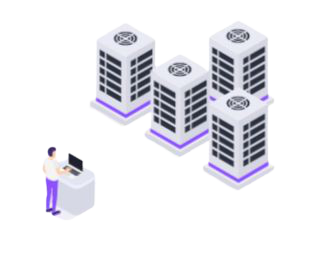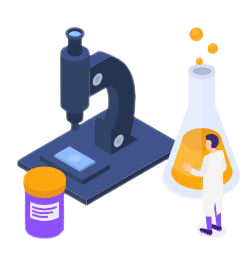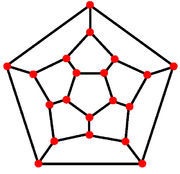Most phenomena in nature are not completely random, but some dependencies and conditions are observed. A relation between us and nature is represented by our senses as well as measuring instruments. Neither one nor the other is perfect and our observations and measurements often contain deviations from reality that can only be estimated and limited but not completely eliminated.
The emergence of Numerical Mathematics and Optimization arose from the world around us, which constantly poses various mathematical challenges and problems. In modern society faced to a rapid development of economy, industry, medicine, celestial mechanics, robotics, IT engineering and similar disciplines, Numerical mathematics and Optimization represent essential working tools. What constitutes the foundation on which these disciplines are developed is the so-called mathematical modelling.
The process of mathematical modelling includes problem identification and the corresponding mathematical formulation, i.e., forming an equation or a system of equations that describe the behavior of the system. When it comes to complex systems, mathematical models are formed by experts from other scientific fields: physicists, chemists, biologists, economists, engineers... The goal is to recognize all the quantities that are relevant for solving a specific problem and to detect the relationships between them. The "abstract model" obtained in this way needs to be written down mathematically, i.e. one needs to define the variables that will represent the relevant quantities, as well as a set of mathematical formulas that define the relations between them. An objective of an expert in Numerical mathematics and/or Optimization is to perform a mathematical analysis that represents the most effective method for solving the mathematical model. In a close relation is the implementation of numerical methods on computers to perform necessary calculations. Finally, when we get a solution to a mathematical problem, it is necessary to interpret the obtained results, return them to the real world and check the validity of the obtained solution. The nature could point out possible mistake and give a set of guidelines for further improvement of the mathematical model.

As a rule, a good mathematical model is complex, so it requires a good knowledge and work with certain numerical software. After creating a mathematical model and obtaining a numerical solution, opportunities for simulations open up. Simulation represents the execution of operations on the system model in order to realise its behavior. This is performed in a simulation software characterized by a user-friendly graphical interface. It also allows modifications of the model parameters and components, and provides a representation of the obtained results in the form of graphs, tables, diagrams and similar ways.
The advantages of the mathematical model compared to the classical experiment are numerous. Experiments are sometimes impossible to implement, for example in
- climatology - study of sea currents and winds,
- economics - market development research,
- medicine - making new materials for implants, planning operations.

On the other hand, in some situations experiments are undesirable, for example in
- working with radioactive material,
- testing the stability of buildings,
- studying natural disasters.

Experiments can be expensive and time-consuming, for example for the purpose of studying
- the effect of radiation on genetic material,
- crystal structures and macromolecules,
- turbulence in an aerodynamic wind tunnel,
- the behavior of cars in a crash.

It is clear that the previously mentioned problems can only be solved by the application of Numerical mathematics, which will offer adequate numerical methods and the error estimation.
Some of the innumerable problems that, after successfully setting up of a mathematical model, are solved by methods of Optimization are the following:
- the problem of choosing combat strategies and assets in the army,
- the problem of determining locations for the construction of schools, hospitals, warehouses, industrial plants, bus stations, airports, shopping centers and similar public buildings,
- designing transport networks: railway and road systems, postal networks, fast delivery systems, passenger and goods transportation in air traffic,
- the problem of product packaging.

In the following examples, we illustrate some problem formulations that we can solve using the methods of Variation calculus and Optimal control:
- optimal travel time of light,
- optimal trajectory of a ship or plane,
- maximization of company profits.
Modelling of many practical problems requires use of the particular mathematical objects known as graphs, i.e., structures represented by a set of vertices and a set of edges.
In real applications, the vertices represent particular objects (geographical locations, parts of the organizational system, persons or groups of persons), while the edges indicate the existence of some relationship between them. Depending on the situation, the edges can represent a geographical connection, a communication channel, the existence of family ties between people, the possibility of transferring goods between locations, and so on.
Graphs appear in many scientific disciplines. They are especially important in electrical engineering and computer science in the construction of computer and telecommunication networks, organization and protection of data, presentation of electrical schemes, image analysis and shape recognition, etc. It would not be reasonable to deal with mathematical models, numerical mathematics and optimization with bypassing the very significant, and closely related, field of graph theory.


In the last period, graphs have been used more and more in solving biological and social problems (preventing the spread of viral infections, increasing the positive influence on social networks...). Graph theory includes a creation of algorithms in order to get an insight into the existing relations between entities and to recognize hidden patterns in the modelled system.
Finding the shortest paths, dominant sets, strongly connected components are just some of the important tasks for graph analysis.
There are numerous software tools that facilitate working with graphs and their generalizations. One of them, called GraphEbra, was developed by members of our Department.
